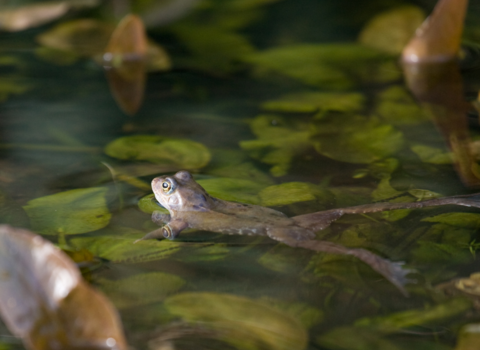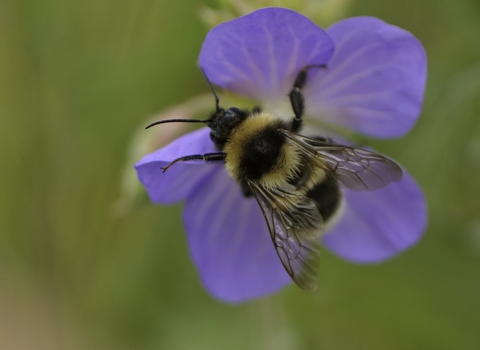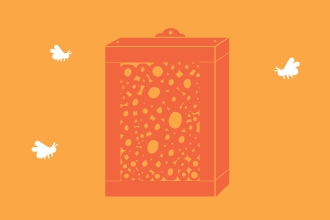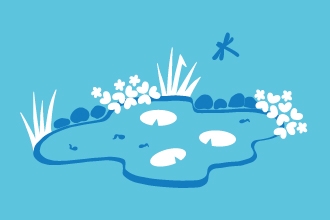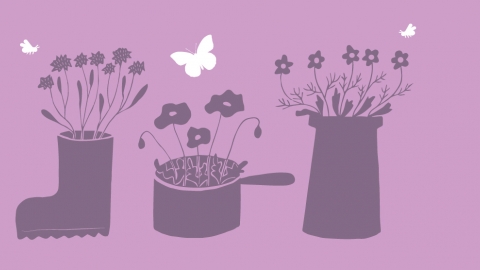
How to create a container garden for wildlife
Pots and containers are a great way of introducing wildlife features onto patios, or outside the front door. They are also perfect for small gardens or spaces like window ledges or roofs. Herbs, in particular, make good container plants and attract lots of wildlife.
Sow your own mini wildflower meadow in a windowbox, line a pot with plastic to make a potted pond or use walls to create vertical herb displays.
Upcycle something into a plant pot
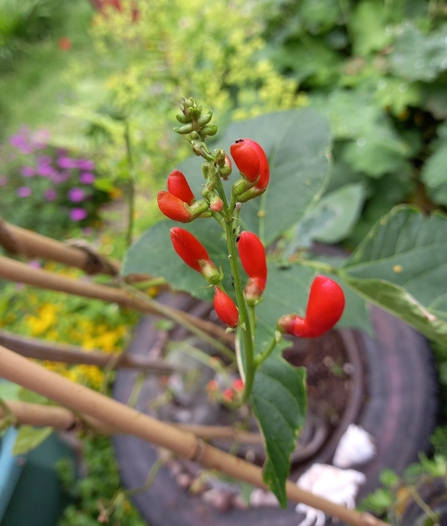
Runner beans growing in a old tyre ©Eden Jackson
You can use anything you like for planting! How about...
- Watering cans
- Chimney pots
- Old kettles
- Holey boots
- Metal pails and buckets
- Paint tins
- Pans and colanders
- Old sinks - or even bathtubs!
Make a hanging basket
Cath Hare
- Line the container or basket with an old woolly jumper cut to size, or choose a solid basket.
- Fill with peat-free compost.
- Start planting! Put in a tall, central plant followed by smaller plants around it, and trailing plants through the sides. Here are some ideas:
Cool blues: aubrieta, lobelia, wild pansy, nepeta
Hot reds: marigolds, fuchsia
Neutral whites: sweet alyssum, erigeron, ox-eye daisy
Tall central plant: knapweed, scabious, lavender, snapdragon, pot marigold
Herb smellies/eatables: verbena, tomatoes, chives, thyme, rosemary, parsley, sage, strawberry, dwarf lavender
Trailers: ivy, nasturtium, honeysuckle, sweet Pea, lobelia ’pendula’ - Continue building up plants and compost until about 5 cm from the top.
- Feed once a week and water frequently in summer.
Make a meadow pot

Long hoverfly on cornflower by James Adler
- If needed, make drainage holes in your container, drill 0.5-1cm diameter holes into the bottom of the pot about 15cm apart.
- Cover with rocks.
- Half fill with peat-free compost.
- Start planting! How about:
Cool blues: cornflower, wild pansy
Hot reds: poppy, corncockle, pheasant’s eye
Soft yellows: corn marigold, corn buttercup - Continue building up plants and compost until about 5cm from the top.
- Feed once a week and water frequently in summer.
- Sow each year.

